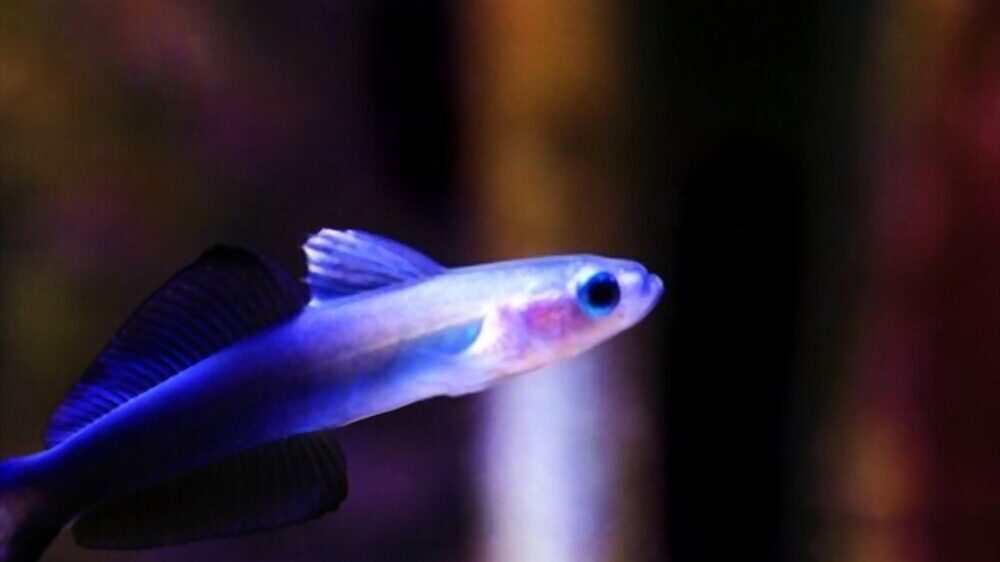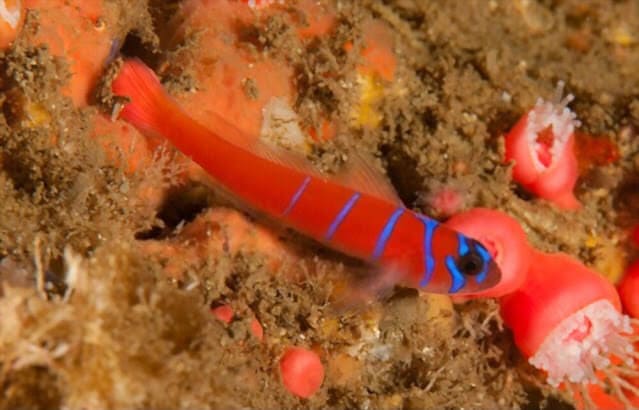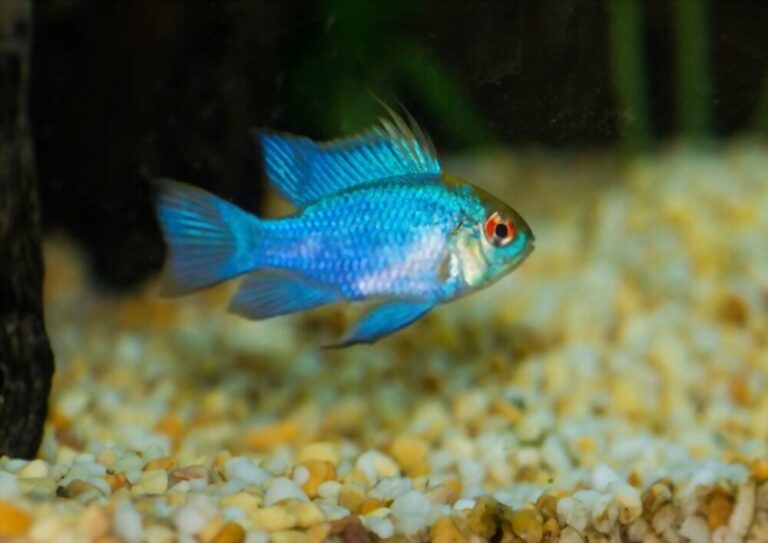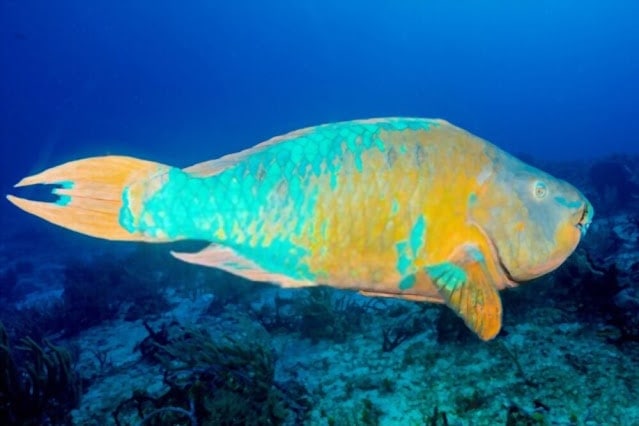Dartfish Guide: Size, Lifespan, Feeding, Care, Tank Size & Tank Mates
Dartfish species are quite hardy and can adapt to aquarium conditions quickly. Therefore, they can be a great choice for aquarists at any level of experience.
They are also brilliant and can respond accordingly to the things happening around them. Other common names for darts are firefish, wormfish, and ribbon goby fish.
Origin
The darts are tropical fish and have their origin in the Indo-Pacific Ocean. They are found in the waters as shallow as just 5 feet and as deep as 200 feet, where they inhabit the sandy bottom with rocky and rubbly slopes around.
All the Species of Dartfish own burrows in the sand. These burrows shelter them for hiding from predators and to sleep at night as well.
But the most exciting thing is that they don’t make their burrows. Instead, they use those made by other bottom dwellers, such as mollusks, worms, shrimps, and sand gobies.
Size & Appearance
They are small fish, with most species reaching an average length of about 4 inches. They have elongated and slender bodies giving them an eel-like appearance.

Darts are an incredible fish species and have a striking appearance because of their colorations. Most of the dartfish species come in brilliant spectrums of orange, red, yellow, blue, green, purple, and black.
Such varieties of body colors make them an excellent choice for most hobbyists looking for some magnificent, peaceful fish for their saltwater aquarium.
Dartfish Lifespan
We can expect the average lifespan for dartfish species is 5 years, with some living even longer. Their longevity depends upon whether they are wild-caught or captive-bred.
Honestly, wild-caught species don’t usually live as long as the captive-bred. It is because of two reasons. Firstly, when they are caught from the ocean, you never know what age they are at.
Secondly, they don’t acclimate to the aquarium conditions as quickly as the captive-bred species because a confined area with glass walls all around is something new to them.
If you provide them with all the optimal conditions, you can expect to have a few more years of these beautiful fish.
Dartfish Care
As mentioned previously, they are fairly hardy species. Therefore, caring for them does not need any specific or strict requirements. However, general caring measures are the basic need of every kind of fish.
Catalina Goby Care Guide: Size, Lifespan, Feeding, and Tank Requirements
Because of their small size, they can be housed in small micro aquariums. However, this is not something to be encouraged by experts.
Small aquariums have many problems related to space and water parameters, resulting in stress-related difficulties and ultimately the degradation of the fish’s health.
Maintaining water conditions is a critical factor in caring for dartfish. They are hardy fishes, but the levels of nitrates directly affect their health and well-being.
Water replacement must be made regularly to maintain a safe level of nitrates and other unwanted substances. Given below are the optimal conditions for your dartfish to perform well.
- Temperature: The ideal temperature for them to thrive ranges from 22.7 to 25.5 degrees Celsius. While making the water changes, the water to be replaced must be kept under the same roof as the aquarium for a few hours to avoid sudden fluctuations of temperature in the tank
- pH: pH requirement is the same as all other marine fishes, that is, 8.1-8.4.
- Specific gravity: 1.020-1.025
Feeding Dartfish
The dartfish can be regarded overall as omnivorous feeders. However, they are strict planktivores in the wild and have a unique feeding behavior.
They are not always hiding in their burrows to wait for the food. Instead, they hover a few feet above their burrows to seize the planktonic organisms floating in the water. Then they swiftly return to the burrow with their prey.
In captivity, they can be adapted to feed on different kinds of live foods, frozen foods, copepods, amphipods, mysid shrimps, and brine shrimps, to name a few.
Once they get acclimated to the tank, they would also readily accept prepared foods for the carnivorous species and flake foods. Feed them a high-quality, balanced diet 2 to 3 times a day.
Avoid overfeeding as it turns out to be fatal for your fish. They are primarily carnivorous feeders, and that’s why meaty foods should be given as a major portion of their diet. Prepared and flakes should also be added but in a small optimal proportion.
Providing them food with the planktons is a treat for them. To do this, you can establish a separate fishless refugium for housing planktons as well as copepods.
Dartfish Tank Size & Setup
The minimum tank size recommended for the dartfish is 25 gallons. It is best to keep them in groups of 4 or more. Thus larger tanks would be needed in this case.
Although many people house them in relatively small or micro aquariums, this is not encouraged by the experts.
In the wild, these fish dart in burrows. So, the tank for them must be provided with a 2-3 inch thick sandy substratum. The rockwork is also a necessary element of their aquarium.
As we have discussed previously, in the wild, they don’t make their burrows. Instead, they live in those made by other sand dwellers. Therefore, the addition of artificial burrows is another important component of their tank setup.
PVC pipes are used for this purpose. These pipes are set in the crevices formed by the rocks and are covered up with sand. They are also known for their jumpy nature, and they can even jump out of your tank. Use a tight-fitting lid to avoid any mishap.
Dartfish Tank Mates
The dartfish are an incredibly peaceful species. Housing them in a community tank requires a lot of consideration. They are small, timid, and delicate fish, and they shouldn’t be housed with predatory or semi-aggressive fishes.
Being very small in size, they are the easy target for hostile tankmates. Therefore, they must be kept with tank mates like cardinals, anthias, comets, gobies, wrasses, jawfish, and chromis.
Dartfish Facts
Below are the facts about the amazing dartfish species.
- Dartfish are carnivorous species.
- They are very timid and take time to get acclimated to the surrounding.
- They are hidden most of the time when still not acclimated.
- The hideouts that they use are the burrows made by other burrowing animals.
- They can’t make their burrows.
- They have elegant bodies and seem to shine like neon lights.
Summary
Dartfish is not an individual fish. Instead, it’s a group of fish that taxonomically belongs to the subfamily ptereleotrinae of the family Microdesmidae of the order Gobiidae.
Well, that’s the discussion for the taxonomist and has pretty much nothing to do with hobbyists. What really concerns them is their spectacular beauty with sparkling shades.







